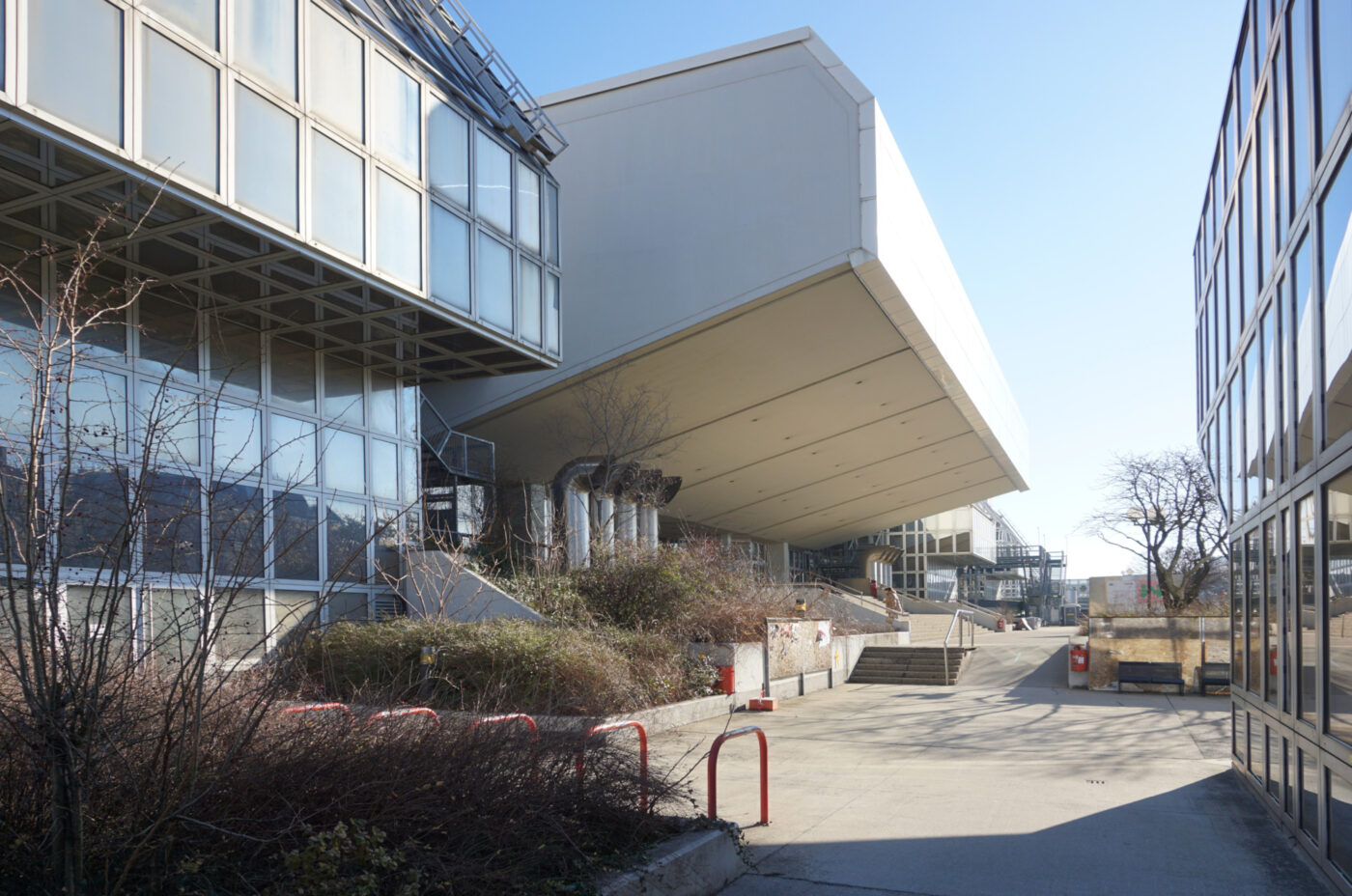Yes to Transformation,
No to Demolition!
The ALLIANZ ALTE WU, Alliance for the former Vienna University of Economics (so-called “alte WU”), is an open, civil society network composed of architectural institutions, interest groups, committed cultural and architectural professionals, as well as users of the alte WU campus. Among its members are IG Architektur, the Allianz für Substanz, Architects for Future Austria, the collective Raumstation, along with other associations and individuals.
Our common goal is to prevent the large-scale demolition of the alte WU. We aim to initiate an alternative process that enables a forward-looking transformation of the entire building complex – preserving its architectural, urbanistic, ecological, social, and cultural values.
“Never demolish, never remove or replace, always add, transform and reuse.”
Lacaton & Vassal, Pritzker Prize winner 2021

Photo Allianz alte WU
POSITIONING
The demolition of a functional building – intended by the Austrian Federal Real Estate Company BIG, the City of Vienna, the University of Vienna and the BOKU University – along with the associated excessive waste of resources, represents an outdated approach to existing building structures. We therefore think it’s our civil and professional responsibility to take a critical stance against the announced demolition.
We advocate for the preservation of the generous,spatially high-quality building structure and its surrounding open landscape that engages with the city. We also urge for for the conservation of our limited resources and the reduction of unnecessary carbon emissions caused by the demolition and reconstruction of this megastructure. We call for a shift in planning culture and project development; one that responds to the imperatives of climate protection.
We promote an experimental evolution of the glazed structure. We stand for the preservation of existing structures of eco-social value, vibrant architecture and urban landscape, as embodied energy. We demand a respectful approach towards the existing fabric as a starting-point, followed by a responsible development strategy. The experimental field of pioneer uses should be strengthened, and a holistic economic perspective on buildings and the building process must be put into practice.
This is about reducing carbon emissions in the construction sector and fostering a positive attitude towards aging buildings. It is about preserving a generous building that offers many spatial qualities, valuable materials, and distinctive surfaces worth protecting. This is about socially embedded structures within the urban fabric – set apart from their surroundings as a car-free island.
It is about more than just preserving the embodied energy in this vast building mass. Through interim uses in recent years, socially rooted structures have emerged, giving the building a purpose-driven and community-oriented function. This place, which now provides space for science, education, art, and civic organizations, must be further developed in a contemporary way.
DEMOLITION AS A SYSTEM
Demolition and new construction follow a system driven by market logic, prioritizing profit, investment, and growth – often at the expense of environmental concerns.
The construction industry is a major driver of the human-made climate crisis. Demolishing buildings generates millions of tons of waste every year. According to the Austrian Environment Agency, around 73.9 million tons of waste were recorded in 2022.
The largest shares of this waste are excavation materials (59%) and construction waste (16%), together accounting for approximately three-quarters of Austria’s total waste volume. Over the past 30 years, the volume of excavation material has increased by around 190% (source: Austrian Environment Agency). Demolishing the massive structure of the former Vienna University of Economics and Business would further multiply this volume. In fact,it would be one of the largest demolitions in Austria in the coming years.
Where, then, is the careful approach to the existing building stock – one that prioritizes maintenance and repair, the adaptation of uses and transformation over demolition and new construction?
Subscribe to our newsletter or follow us on Instagram to stay up to date!